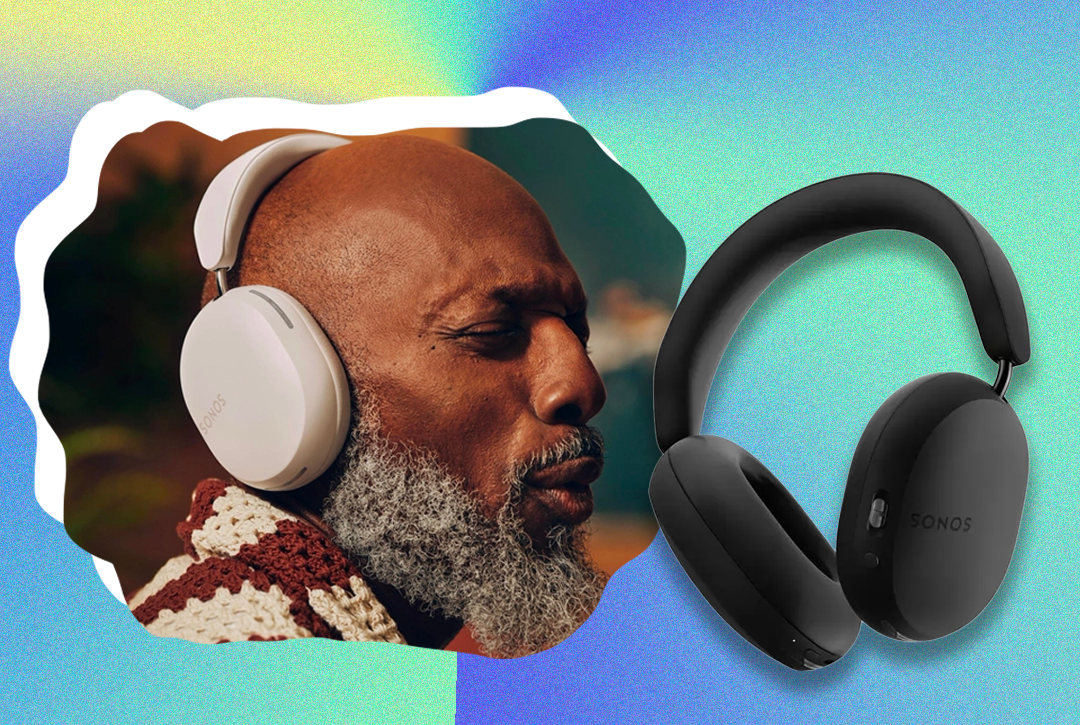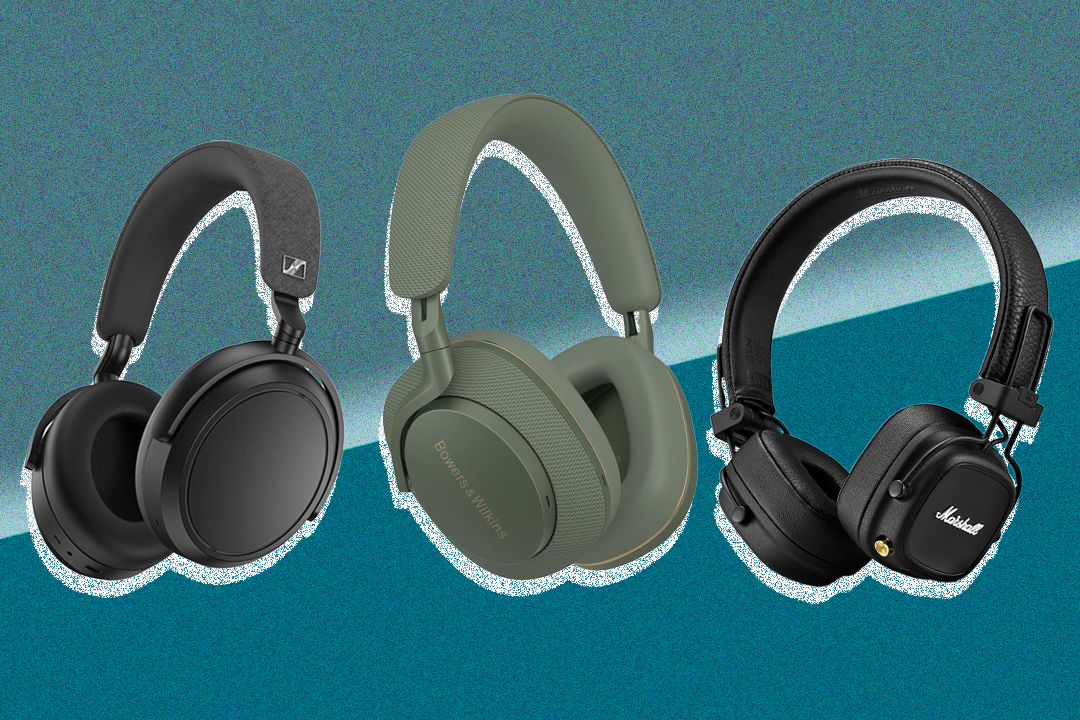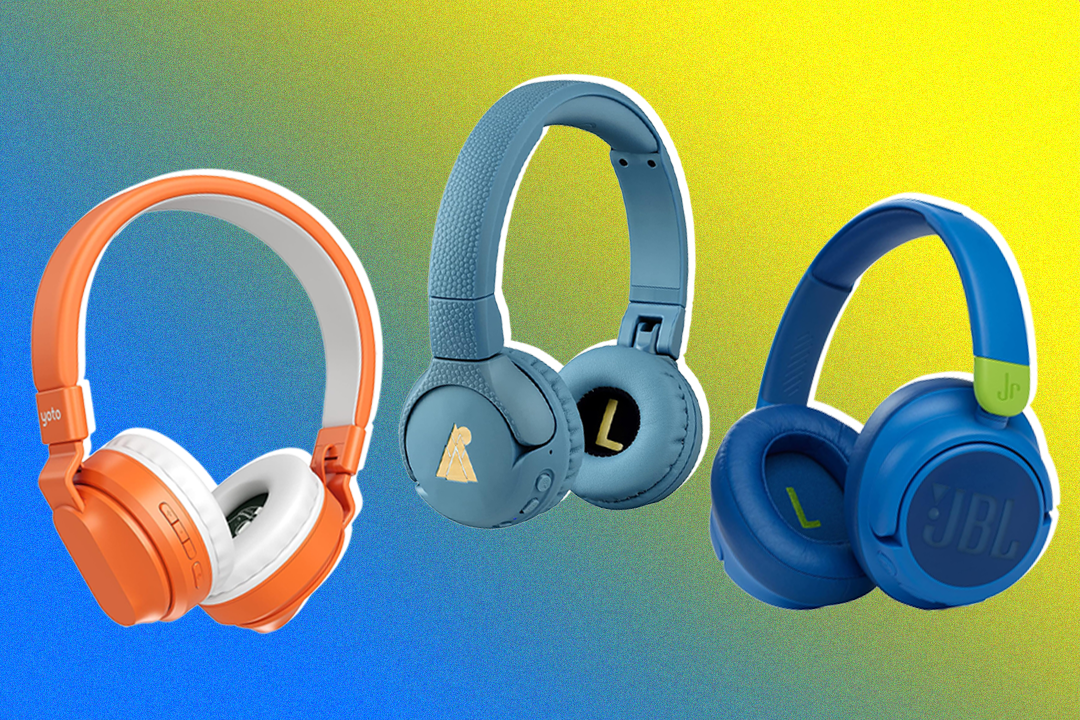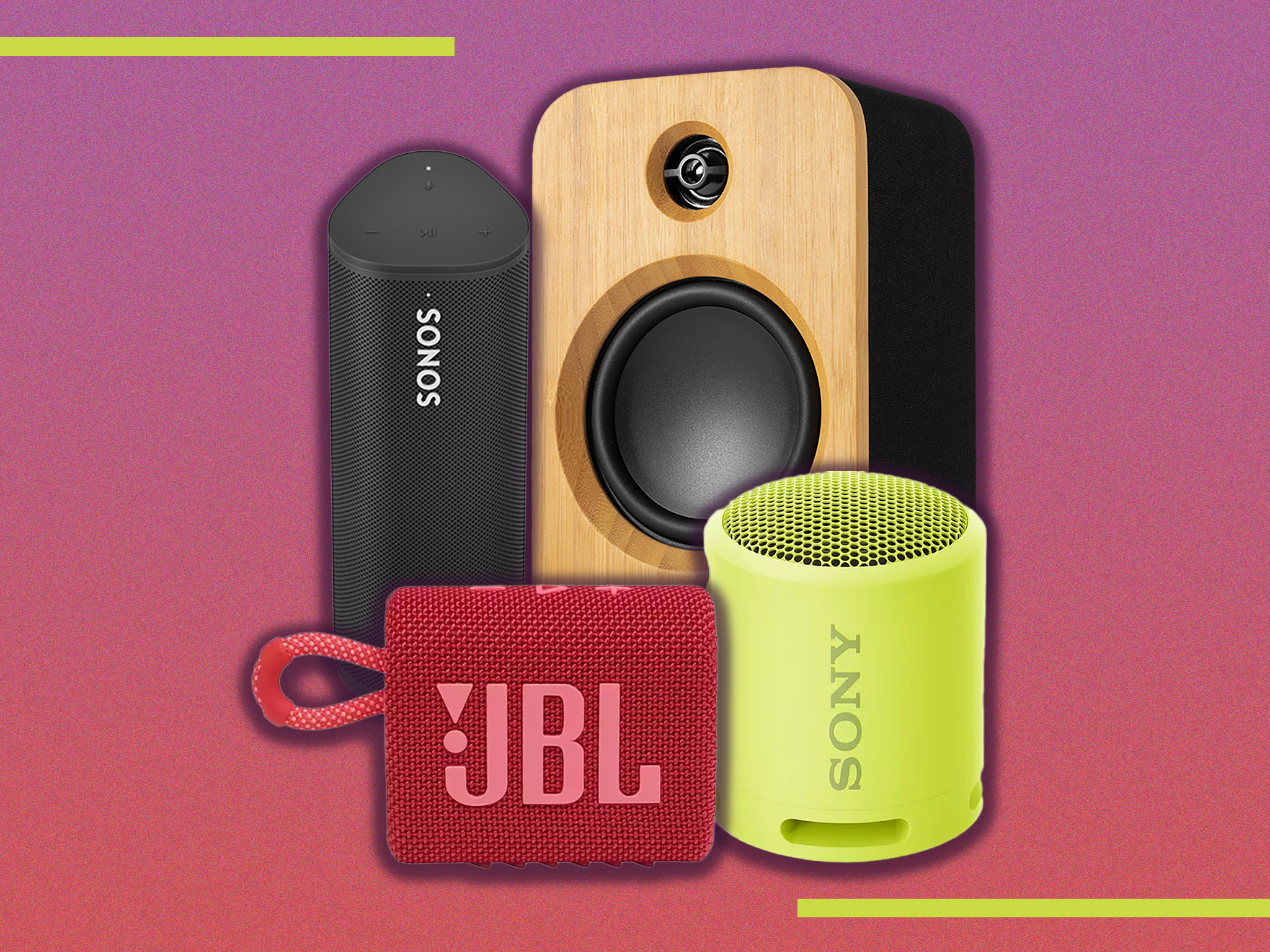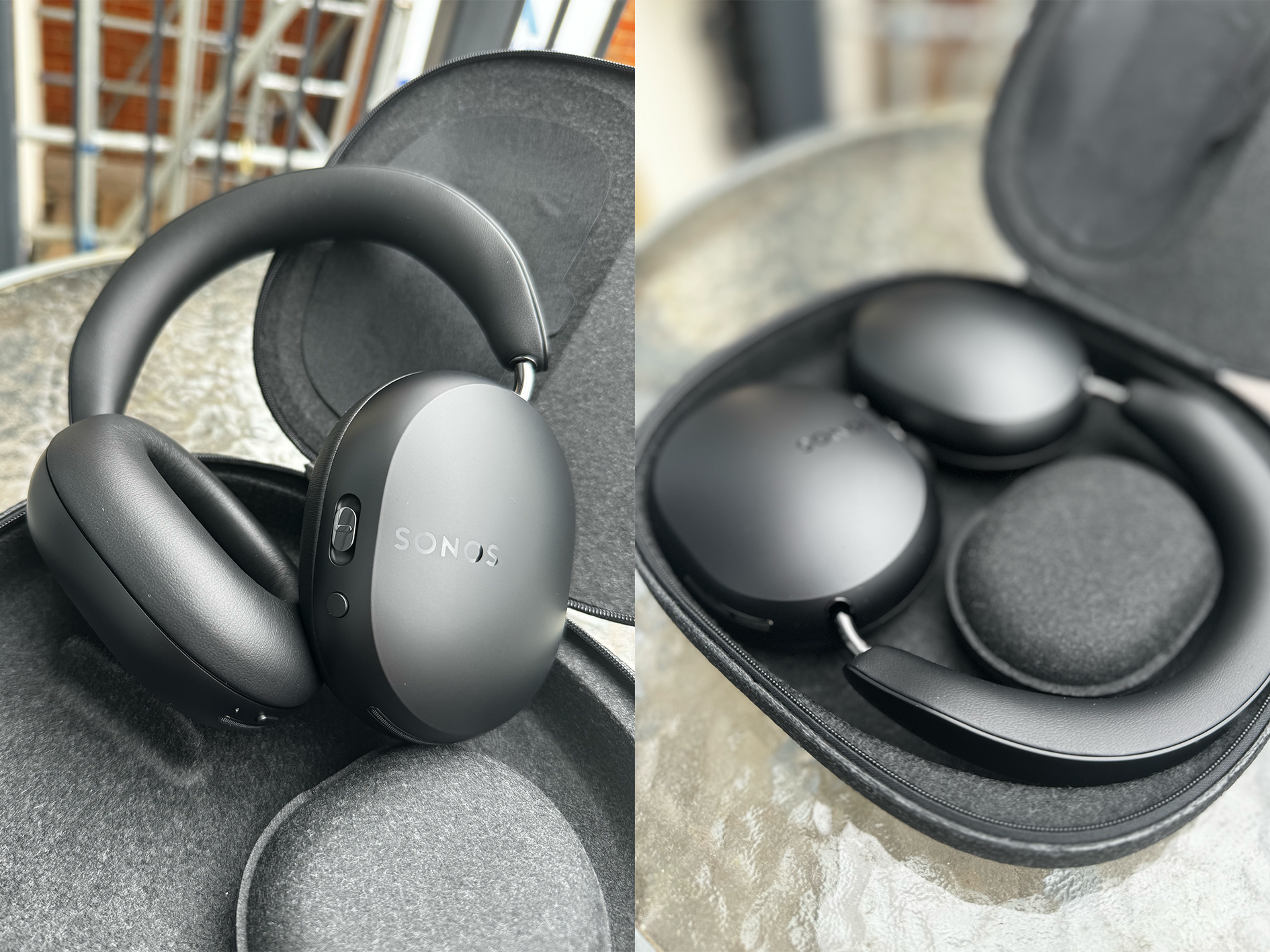Sonos Ace
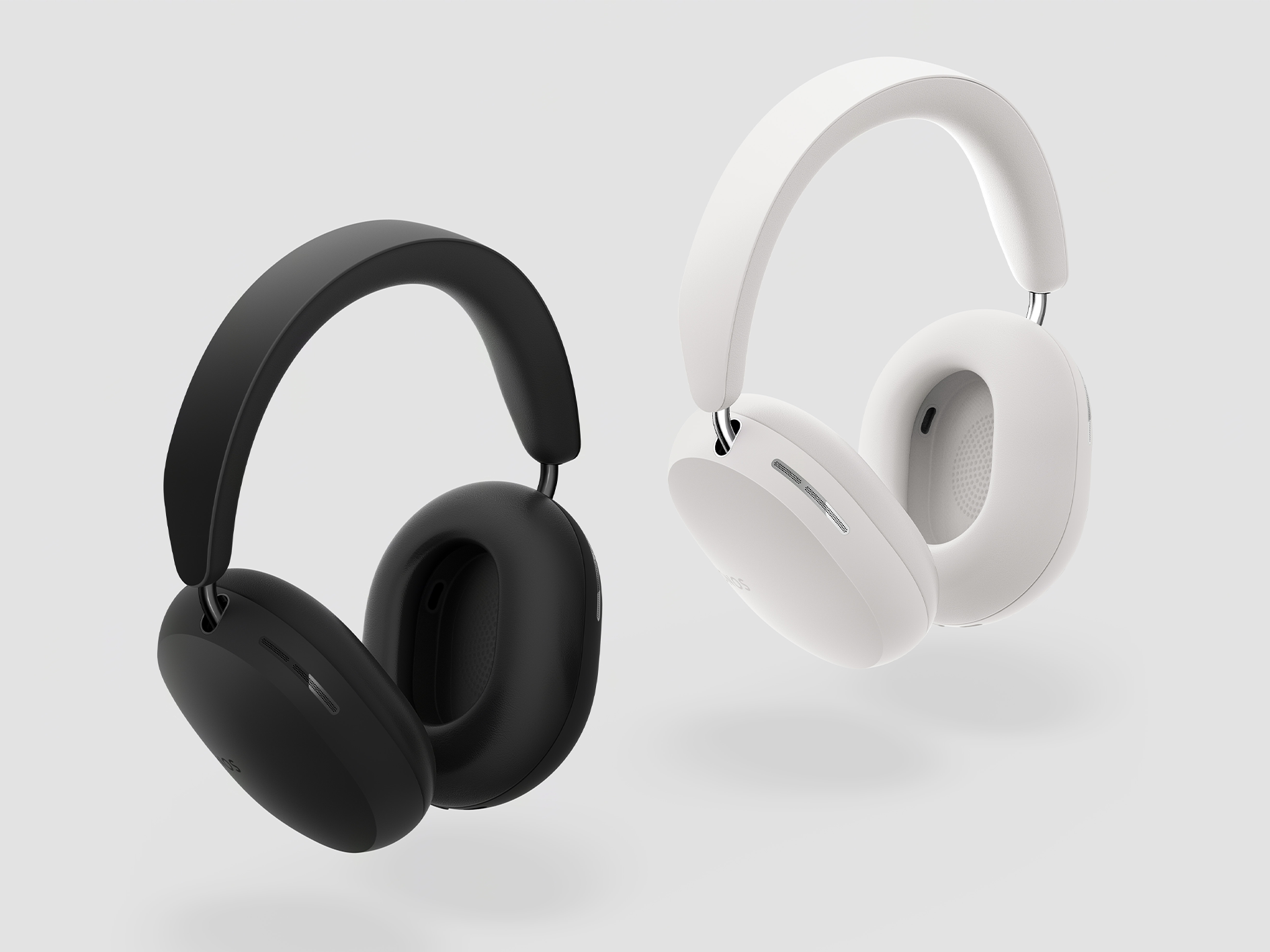
- Type: Over-ear
- Weight: 312g
- Dimensions: 191mm x 160mm x 85mm
- Noise cancellation: Yes
- Battery life: 30 hours
- Connection type: Bluetooth 5.4 with multipoint
- Voice control: Yes, connected device’s voice assistant
- Included removable cable: Yes, USB-C
- Why we love it
- Comfortable, appealing design
- Stunning sound
- Excellent carrying case and accessories
- Take note
- Not as well-embedded into the Sonos system as we’d hope
- Pricey
Sound
The listening experience through these headphones is exceptional. Songs are crystalline; music is clear and precise, and you’ll hear both the delicate details and the tough thrum of loud songs.
The sound is a little like the rest of Sonos’s speakers: it aims to be faithful and precise rather than brash or assertive. If you want to be critical – but after listening with them, you probably don’t – then that can mean they sound a little flat, and the sound feels aimed more at listening to well-made but sparsely-populated recordings, rather than, for example, giving you the full thud of a techno song that you want to use to carry you through another rep at the gym.
None of that will come as any surprise to anyone acquainted with Sonos’s speakers, which embody all of the same value. And given that people are likely to come to these headphones from having some of the company’s other products, perhaps that is the most useful thing to say: these sound like the really good Sonos speakers, but they’re on your head.
This becomes even more magical when you use them in combination with the Sonos Arc soundbar, which is aimed at people who might want to continue using their home theatre when the noise might otherwise be antisocial. The sound is entrancing; you almost don’t believe you actually have the headphones on. (At the moment, this feature is limited to Sonos’s most expensive Arc soundbar, but it has committed to bring it to the Beam and others after release).
Similarly good is what you don’t hear: these headphones have impressive active noise cancellation to block out everything else. It will cut out both the low level thrum of the city and the distracting trill of nearby conversation. And when you turn it off, it is impressively discreet: it sounds like you don’t have the headphones on at all.
Too often noise cancellation can feel like being underwater and passthrough can sound like your ears just popped on a plane. But Sonos’s commitment to faithful sound even seems to extend to its noise cancellation – they’re just a very quiet and slightly louder version of the real world.
Design
Just as the sound is a transformed version of the quality Sonos is known for, so is the build. These headphones just feel premium – as they should, given they cost £449 – but not in a showy way. (They are, ironically for headphones, an embodiment of quiet luxury.)
Sonos’s idea of luxury is fundamentally different from, say, Apple and its AirPods Max. Those headphones also sound brilliant but that sound comes out of a package that leans into strong aluminium for its premium feel. It means that they feel a lot more solid than the Ace, for instance, but it also means that they feel a lot more heavy; many people complain that a couple of hours with the AirPods Max becomes uncomfortable as the band over the top presses into your head.
There is none of that problem with the Ace. They sit so comfortably you can easily forget they’re on. They seem exquisitely shaped – at least to our head – so that they let what little weight they have fall in all the right places. Sometimes the vegan leather earcups can feel a little hot, but otherwise they are almost transparent.
The switches and buttons are easy to navigate and satisfying to press, and they have been integrated into the overall design in a way that means using them feels instinctive. A few hours with the Ace on and they feel a part of your head, not like they are crushing it.
This thoughtful design extends to the soft case they come with, too. They sit neatly in there and embody a design philosophy that makes the Ace feel more like a soft piece of furniture than a gadget. It is by some distance the best case we’ve tried.
Connected features
The sound and the design is exactly what you’d expect of Sonos: refined, classy, precise, perhaps so clean as to be a little boring. Sadly, there’s one key focus where these headphones aren’t what you’d expect of Sonos: their connected features.
The “smart” of Sonos’s smart speakers has always been a key part of the company’s offering. If you have more than one of them in your house, you can smoothly connect them together, grouping and ungrouping them as you want without any faff or latency. This has even applied to its recent portable speakers, which have brought even more smarts: the Sonos Roam has a feature called “Sound Swap” that means you can come in from listening in the garden and throw the sound to your kitchen, for instance.
None of this is present in the Ace. They are Bluetooth headphones, through and through. You can control them using the Sonos app, but only to update them and adjust preferences. The smarts are simply not there.
When these headphones were just rumours, we had visions of using them in exciting ways with the rest of our system. Maybe you could arrive home from your commute and fling the song you were listening to into your flat. Perhaps you could link the headphones with your speakers so that you could listen to the same song in the garden that your partner was listening to in the kitchen. Or you could even both have a pair of headphones, in perfect sync, to listen to an album together or watch TV quietly. Surely at the very least you would be able to send music over wifi to your headphones when you were at home, so that you don’t have to ensure your phone is constantly in range.
You can’t do any of these things. That seems to be because the headphones can’t rely on wifi. Doing so would take up too much battery, meaning they are largely Bluetooth only. That limits the smarts so much that while the headphones are made by Sonos and get all the benefits of that, they are not really a part of the Sonos ecosystem.
Some of this just seems befuddling. Sonos is selling a “pair” of Ace headphones on its website, offering people the chance to “double up on the ultimate personal listening experience with two pairs of headphones”, according to the description. But if you click the “more info” tab on the website, the confusion becomes clear.
“Use one pair at home and another for travel. Quietly share an immersive home theatre experience with someone when you swap TV audio from Sonos Arc. Keep one pair for yourself, and give the other as a gift.”
The second example sounds brilliant, but it isn’t actually possible: one Arc can only send sound to one Ace. As for the first example, why would you need separate headphones for travelling and at home? It’s a confusing description – but one that seems to stem from a central confusion at the heart of these headphones.
Part of the problem here is not necessarily Sonos’s, but is really about our own expectations. Sonos never said that its headphones would include any of these features. But it has also leant heavily into the fact that the headphones are its “most requested product ever”. I can’t help but think that at least a sizeable number of those requests were from people who wanted their headphones to play nicely with the rest of the system.
The Ace does of course offer the feature that allows them to connect to a soundbar and play that music, along with impressive tools that map your room and ensure that the sound stays the same as it would be if it were being played out loud. This is useful at times when you want to be quiet. But it’s also just a reminder of what could have been: imagine this but everywhere.
